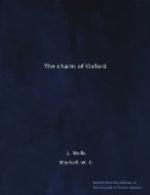[Plate VIII. Oriel College and St. Mary’s Church]
It is a curious coincidence that three of the most troubled reigns of English history have been marked by double college foundations in Oxford. That of Henry VI, in spite of constant civil war, threatening or actual, saw the beginnings of All Souls’ and of Magdalen; the short and sad reign of Mary Tudor restored to Oxford Trinity and St. John’s; and in an earlier century the ministers of Edward II, the most unroyal of our Plantagenet kings, gave to Oxford Exeter and Oriel. The king himself was graciously pleased to accept the honour of the latter foundation, and his statue adorns the College Quad, along with that of Charles I, in whose day the whole College was rebuilt. The front may be compared architecturally with those of Wadham and of University, which date from about the same period (the first part of the seventeenth century), when, under the fostering care of Archbishop Laud, Oxford increased greatly in numbers, in learning, and in buildings. Though Oriel has neither the bold sweep of University nor the perfect proportions of Wadham, it yet is a pleasing building, at least in its front.
Like New College, Oriel is dedicated to the Blessed Virgin, and, also like New College, the name of “St. Mary’s” early gave way to a popular nickname. The College at once on its foundation received the gift of a tenement called “L’Oriole,” which occupied its present site, and its name has displaced the real style of the College in general use.
It is only fitting that, as in our picture, St. Mary’s Church should be combined with Oriel, for the founder was Vicar of St. Mary’s, and the presentation to that living has ever since been in the hands of the College. It was as a Fellow of Oriel that Newman became, in 1828, Vicar of St. Mary’s, from the pulpit of which, during thirteen years, he moulded all that was best in the religious life of Oxford. The glorious spire of the church was still new when the College was founded.
Oriel and its chapel are among the places for religious pilgrimage in Oxford. As Lincoln draws from all parts of the world those who reverence the name of John Wesley, so the Oxford Movement and the Anglican Revival had their starting-point, and for some time their centre, in Oriel. The connection of the College with the Movement was not in either case a mere accident; the Oxford Revival, at any rate, was profoundly influenced by the personality of Newman, and Newman, both by attraction and by repulsion, was largely what Oriel made him. Among those who were with him at the College were Archbishop Whately, whose Liberalism repelled him, Hawkins, the Provost, whose views on “Tradition” began to modify the Evangelicalism in which he had been brought up, Keble, whose Christian Year did more for Church teaching in England than countless sermons, Pusey, already famous for his learning and his piety, who was to give his name to the Movement, and, slightly later, Church, afterwards Dean of St. Paul’s, the historian of the Movement, and Samuel Wilberforce, who, as Bishop of Oxford, was to show how profoundly it would increase the influence of the English Church.




